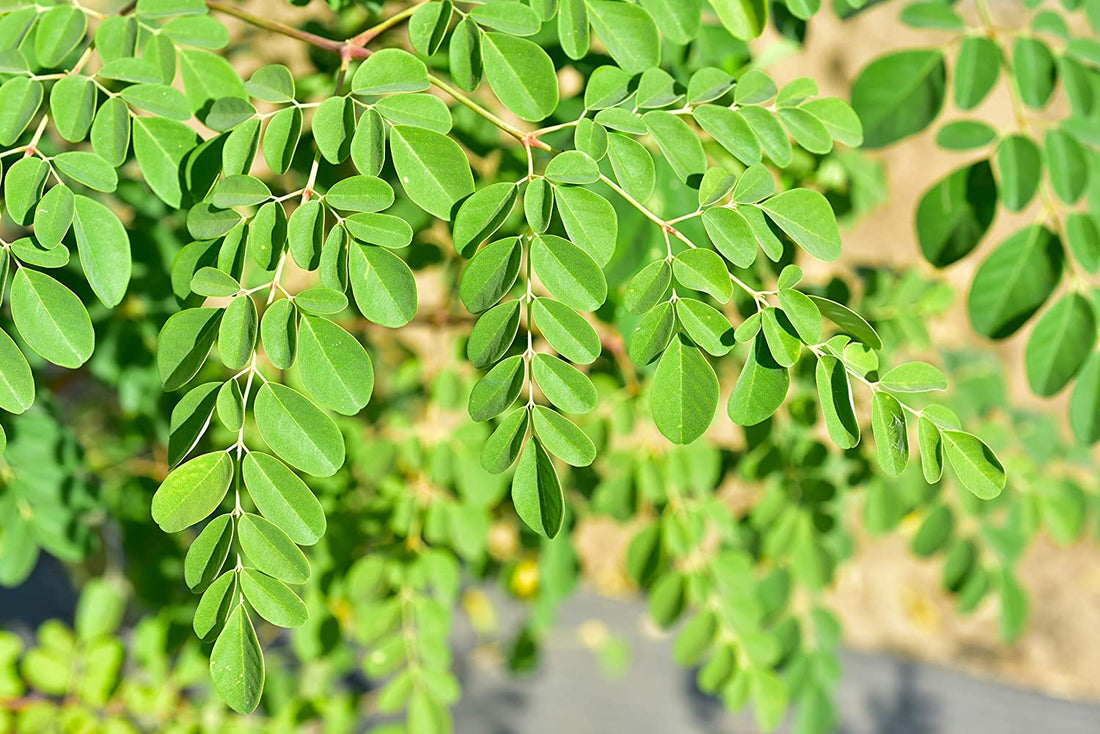
Growing Moringa in Pakistan: Complete Guide
Share
Growing moringa (سہانجنا) at home is one of the best ways to enjoy a nutritious, fast-growing, and highly useful plant. Known as the “miracle tree,” moringa thrives easily in Pakistan’s warm climate, providing edible leaves, pods, and flowers. Here’s a simple guide to growing it successfully at home.
| Aspect | Details |
|---|---|
| Best Planting Time | February to May; August to September |
| Soil Type | Well-drained, sandy loam or loamy soil; pH 6.0–7.5 |
| Sowing Depth | 1 inch |
| Plant Spacing | 6 to 10 feet apart |
| Watering | 2–3 times/week when young; once a week when mature |
| Fertilizing | Balanced fertilizer during early growth, low nitrogen later |
| Harvest Time | Leaves: 2–3 months; Pods: 6–8 months; Seeds: 10–12 months |
| Storage | Dry leaves for long-term storage, refrigerate fresh leaves |
Step 1: Sow Seeds 🌱
When to Sow:
- Sow seeds from February to May, when warm weather is stable.
- Ideal soil temperature for germination is 25°C to 35°C.
- Avoid sowing during very cold months.
How to Sow: Direct sow seeds 1 inch deep in light, well-draining soil. Soak seeds overnight before sowing to improve germination.
Germination Tips: Seeds sprout in 7–14 days under warm, moist conditions. Keep the soil lightly moist, not soggy.
Step 2: Transplant Seedlings 🌿
When to Transplant: If started in pots, transplant seedlings when they are 8–10 inches tall, about 2–3 weeks after sowing.
How to Transplant: Transplant seedlings into the ground or large grow bags (at least 18–20 inches). Space plants 6–10 feet apart in home gardens, or 15+ feet for commercial planting to allow full growth and easy access for harvesting.
Aftercare: Water gently after transplanting. Choose a sunny, open spot to encourage strong growth.
Step 3: Care for Plants 🌞💧
Sunlight Needs: Moringa needs 6–8 hours of full sun daily for vigorous growth.
Watering: Water 2–3 times a week during early growth. After establishment, reduce to once a week or only during dry spells.
Feeding Schedule: Mix compost into the soil before sowing. Feed lightly with organic fertilizer once every 2 months if needed.
Step 4: Protect Plants 🐛
Common Pests: Moringa is usually pest-resistant, but young plants may be attacked by aphids, caterpillars, or mites.
Natural Protection: Spray neem oil every 15–20 days (1 teaspoon neem oil + 1 liter water + few drops soap) if pests appear.
Common Problems:
- Yellow Leaves: Could be from overwatering or poor soil drainage — water only when soil is dry at surface.
- Slow Growth: Happens in heavy clay soils — plant in loose, well-drained soil.
- Branch Drooping: Common during heavy rains — prune lightly to maintain strong structure.
Step 5: Harvest Leaves and Pods 🌿
When to Harvest:
- Leaves: Start harvesting after 2–3 months, once the plant is about 3–4 feet tall.
- Pods: Harvest edible drumsticks (pods) 6–8 months after sowing when they are young and tender.
How to Harvest:
- For leaves, snip young shoots or cut leaves with scissors.
- For pods, use a knife or scissors when they are 12–18 inches long and tender.
Bonus Tip: Regular harvesting encourages bushier growth and more leaf production.
FAQs
Can I grow moringa in pots?
Yes, use large pots (at least 18–20 inches wide and deep) and prune regularly to control size.
How tall does a moringa tree grow?
Moringa trees can reach 30–40 feet or more, but regular pruning keeps them compact and bushy for home gardens.
Why are my moringa leaves turning yellow?
Often due to overwatering or poor drainage. Let soil dry out between watering sessions.
How often can I harvest moringa leaves?
You can harvest every 3–5 weeks once plants are well-established.
Is moringa fast growing?
Yes, in warm weather, moringa grows extremely fast and can reach 8–10 feet in just a few months.
Moringa is a low-maintenance, high-value plant perfect for home gardens. With warmth, sunshine, and minimal care, you’ll enjoy fresh, highly nutritious leaves and pods — ideal for boosting your meals naturally.

